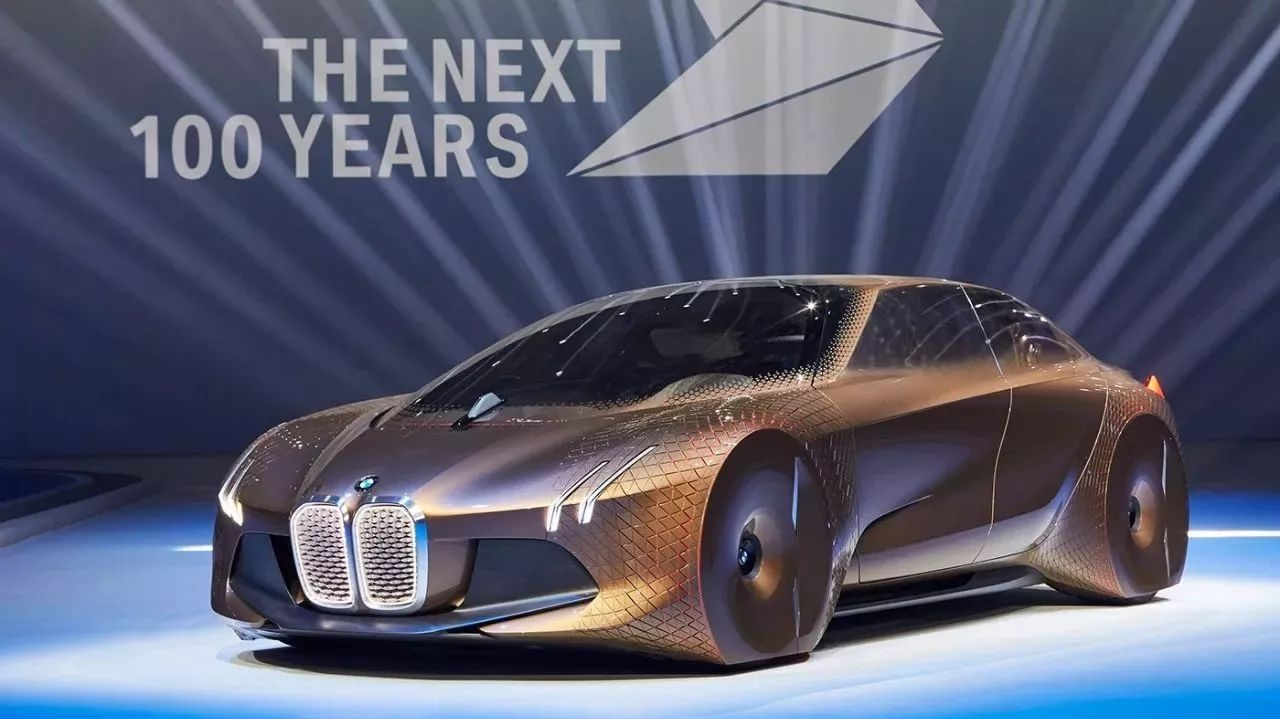I bet you have already heard about two big news, one is the signing of a letter of intent to establish a joint venture between BMW and Great Wall Motors, which will produce electric MINI cars in China, and the other is Li Shufu’s 9.69% stake in Daimler, making him the largest shareholder with a current market value of nearly $9 billion.
Both news started to emerge at the end of last year and settled at the beginning of this year, giving a great start to the Chinese Lunar New Year in 2018 and awakening people from the holiday fatigue.
Many people speculate that the BMW-Great Wall joint venture, just like Ford-Zotye’s joint venture, is a response to the dual credit policy for new energy vehicles. However, let’s not forget that Great Wall had been discussing with Volkswagen for many years, and BMW had been seeking a second partner in China. The dual credit policy is not the cause but rather an important factor that facilitates the realization of the collaboration.
The reason why some people feel surprised about the BMW-Great Wall collaboration is instinctively judged from the perspective of brand attributes. A German luxury brand and a local independent brand, seemingly irrelevant, suddenly become in-laws. The strong topicality of the two brands themselves, combined with the dramatic conflicts of differentiation, inevitably attracts attention.
BMW emphasized in its official press release that “there will be no new sales and service channels built outside of China’s existing network system,” which is probably a lesson learned from the SAIC-Audi incident. The first thing to do is to pacify the existing dealers. At the same time, this also indicates that in order to become BMW’s joint venture partner, it is necessary to agree not to build new sales and service channels.
The lesson from the SAIC-Audi incident has taught us to handle dealer issues with special care. If BMW finds a similarly strong partner, it is difficult to ensure that there will be no two strong players competing.
Looking back at BMW’s cooperation with Brilliance Auto, it also surprised many people, but over the years, BMW’s development in China has not been affected. Strong alliances do not necessarily mean stronger results. Just like the collaboration between Mercedes-Benz and BYD on electric cars, it may seem like a perfect match, but who knows the twists and turns of the process of falling in love.
What I am more concerned about is BMW’s electrification strategy.
Last December, to celebrate delivering 100,000 electric cars to global customers within a year, BMW projected its headquarters building in Munich into the shape of a battery, flashing lights like a public declaration, giving the impression that global electrification is about to happen right away.
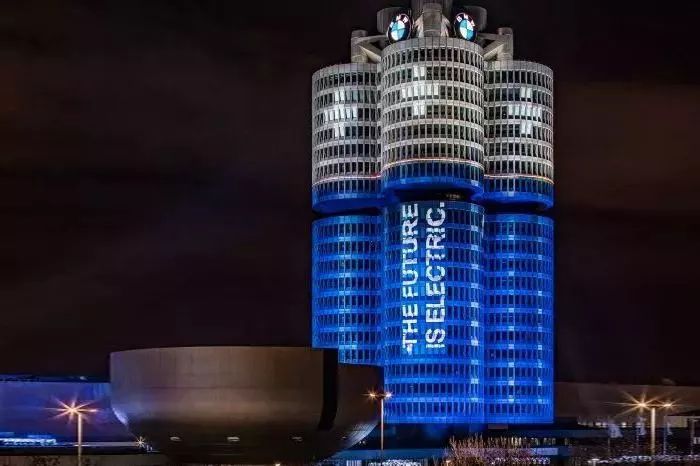
A little disappointing, though, was that the building projected the shape of a cylindrical battery, which is best represented by Tesla. However, BMW’s cars use square batteries from Samsung SDI.It may seem a bit harsh to say this about BMW. After all, compared to other traditional car brands that switch from fuel cars to electric, BMW’s new exploration in the i series is commendable.
We have previously summarized BMW’s electric vehicle models throughout the years. Before the 1990s, BMW’s electric vehicles were all tentative and experimental. Production quantities varied from a few to a dozen.
The real exploration of BMW’s electrification began with Project i.
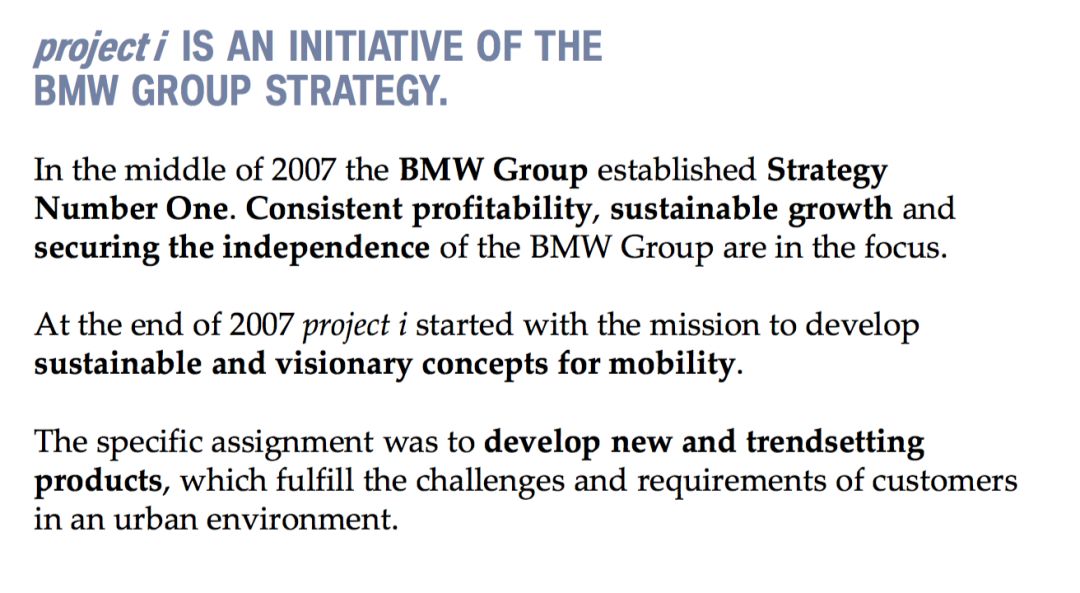
Project i originated from BMW’s “First Strategy”. BMW established the “First Strategy” in 2007 and updated the entire content framework in 2016.
The original intention of Project i is environmental protection, with a focus on urban travel, so small and medium-sized vehicles were chosen at the beginning of the project.
Project i started with two experimental models. One was the MINI E and the other was the Active E developed on the basis of the 1 series.
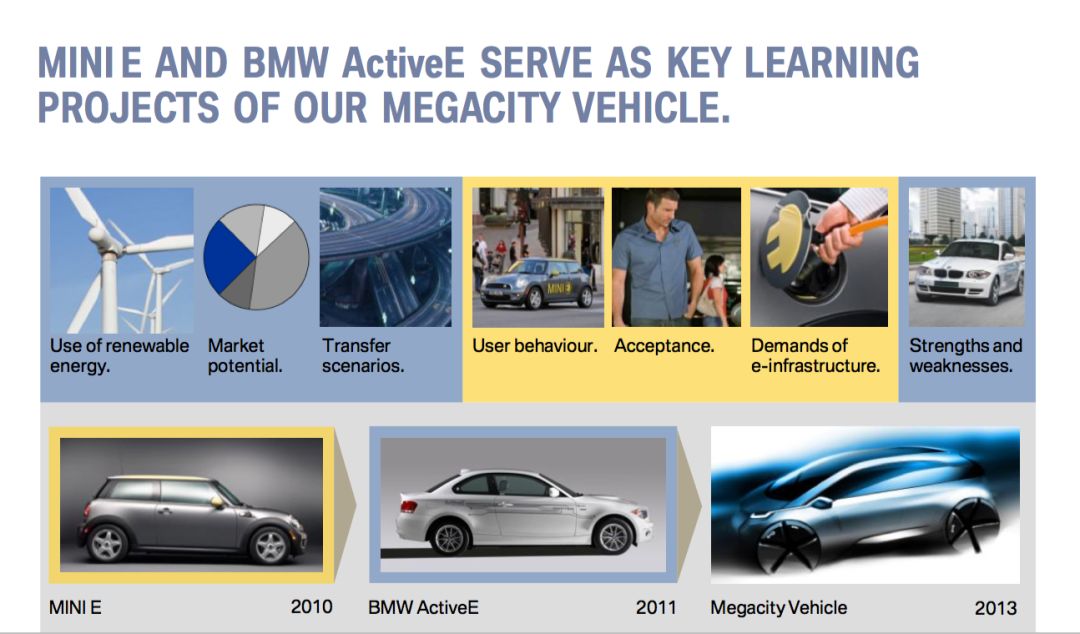
Note: The Megacity Vehicle is later developed into i3.
These two cars were regarded as important learning foundations for i3 and were listed together on BMW’s official website as members of the “Large-scale Electric Vehicle Test Program”. At the same time, they are also the “very challenging small electric vehicles” that BMW Board member Sheneberger mentioned.
The challenge of small electric vehicles is how to install a battery pack that meets a certain range in a small vehicle structure.
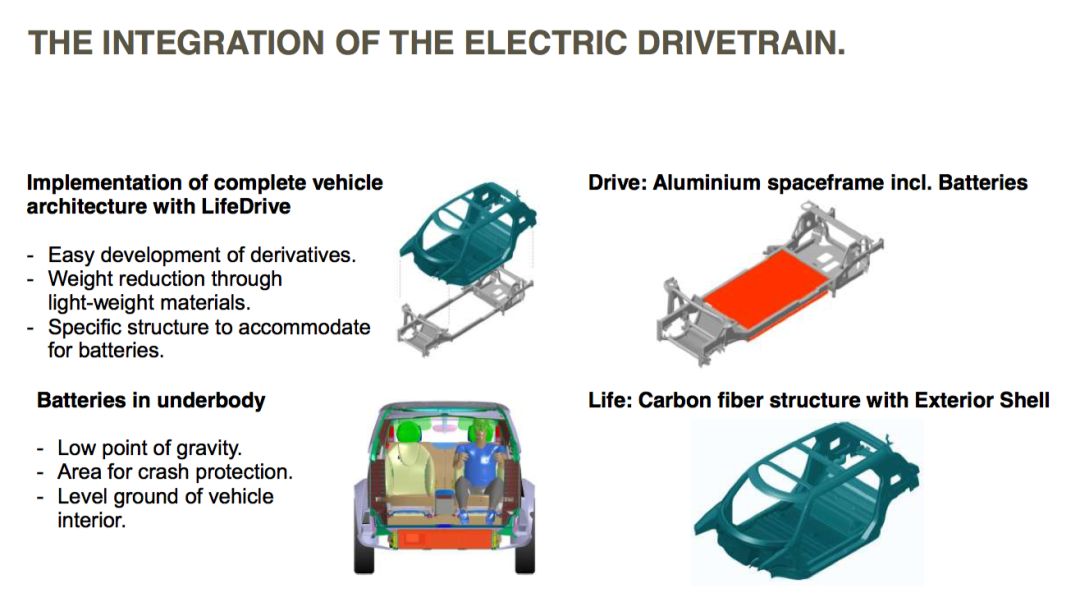
It is also for this reason that in the i3, BMW emphasizes the integration of the electric system, including the LifeDrive module architecture and the layout of the battery at the bottom of the vehicle.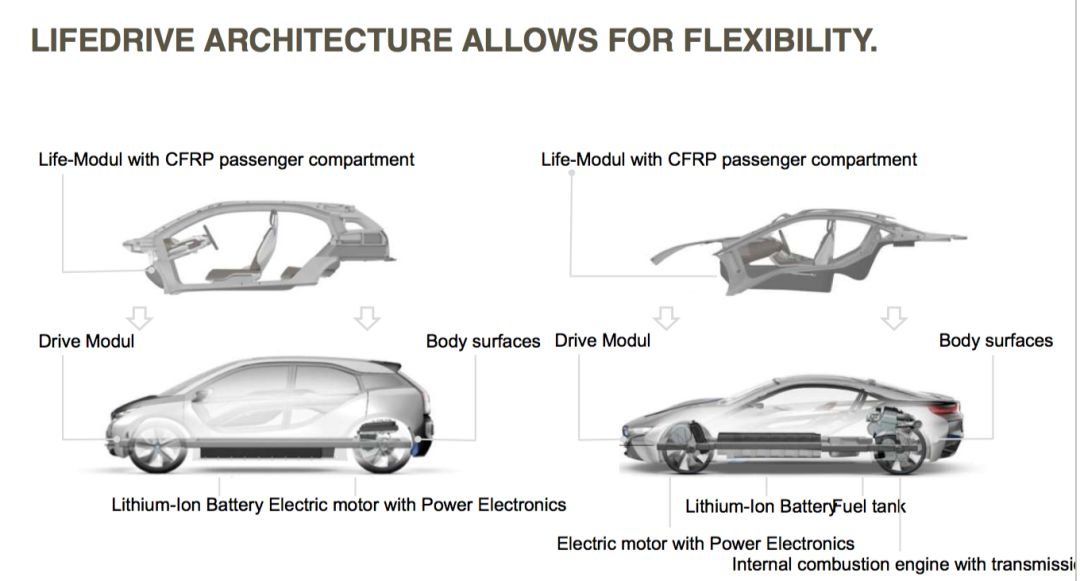
The LifeDrive architecture is composed of two modules, Life and Drive. Life represents the passenger cabin made of composite carbon fiber materials, while Drive is composed of lithium-ion batteries, drive system and suspension.
Unlike Tesla, BMW’s development of pure electric car paths in the body structure is from small to large, while Tesla is from large to small. In the pioneer exploration stage, it is understandable to use niche models as a fulcrum, but this has led to a division between traditional car companies and new start-ups, which is evident in their products.
BMW has made the i3 a unique and distinctive niche model with a unique style. In addition to the repeatedly emphasized carbon fiber structure of the body, the interior of the i3 also uses recyclable materials. Even the Leipzig plant that produces the i3 uses wind power to supply the electricity needed for the production process. However, in terms of consumer perception, the downside may be a plastic feel and a peculiar shape.
Tesla, on the other hand, is determined to replace traditional cars. The designs of Model S and Model X are designed to be close to the designs of best-selling luxury cars, without giving customers a sense of excessive difference.
Facing the problem of limited battery energy density, BMW’s solution is to supply limited mileage to limited customers, while Tesla’s solution is to produce large vehicles, using as many batteries as possible and increasing the selling price.
The difference between these two solutions is not the difference in thinking methods, but the difference in technical routes and technical evaluation results.
You can feel BMW’s emotional changes towards electric vehicles in the statements of BMW executives. In an interview in 2016, BMW executives expressed their belief that electric cars would be hindered by battery technology and people are not prepared to spend more money on electric cars.
However, earlier this year, BMW Vice President Stefan Juraschek stated in an interview with the media that of the hundreds of i3 owners surveyed, 90% of them said they would no longer drive traditional fuel cars. As for hybrid car owners, 60% chose to continue driving hybrid cars, 30% chose to buy pure electric cars, and only 10% of users chose to return to fuel vehicles.
In other words, although people may not be willing to spend more money on electric cars, once they start using them, it is difficult to go back. This is the true charm of electric vehicles.
From the MINI E to the i3, we have just discussed the first phase of BMW’s “first strategy.”BMW Group Chairman Krueger said that the pure electric MINI and X3 will mark the beginning of the second phase of BMW Group’s electrification strategy.
Take a look at the BMW 2025 model roadmap.
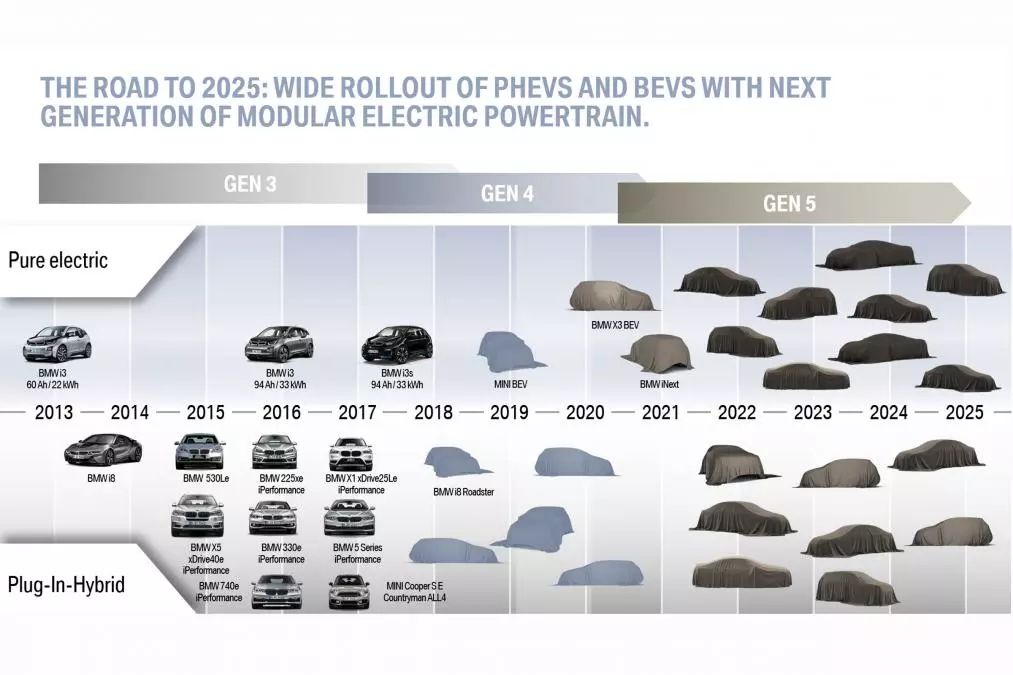
If we take a decade as a stage, then the chart takes a five-year cycle as a replacement. From the launch of the i3 to the launch of the i3s is the third generation, from the launch of the i3s to the X3 is the fourth generation, and the iNext model will start the fifth generation. It can be seen that the focus of the third generation is still the i3 series, the fourth generation has become the electrification route of BMW’s old models, and the fifth generation will be dual-line parallel.
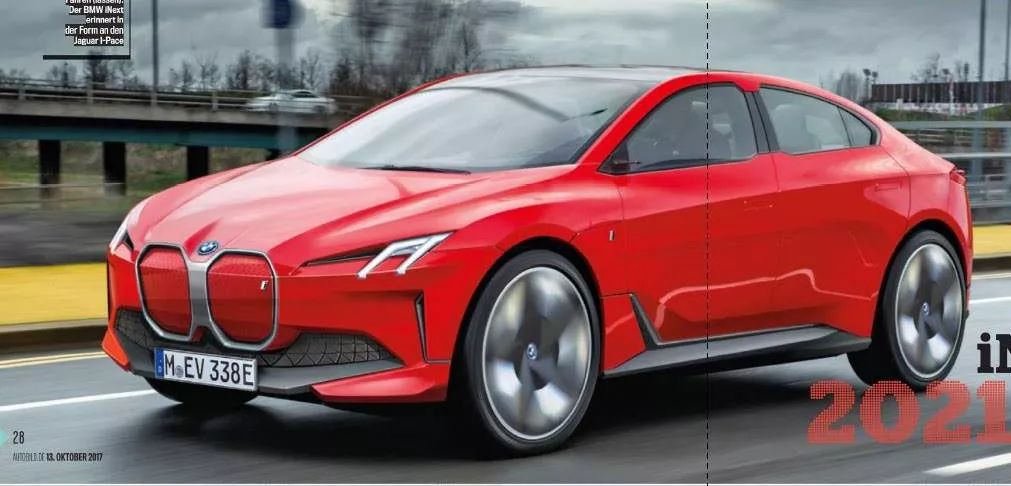
It must be noted that Project i is not equivalent to the models named with “i”. Project i is the embodiment of BMW’s electrification strategy, which includes two routes – one is the electrification of BMW’s traditional models, and the other is the brand new design of the i series. Only by understanding these two routes can you truly understand BMW’s intentions and layout in electric vehicles.
Different from Mercedes-Benz and Volkswagen’s high-profile promotion of new electric vehicle platforms, BMW’s research and development of the i series models, in the words of BMW insiders, is not a brand-new electric vehicle platform in a strict sense, but a new design production line. BMW has not invested in the development of a completely new electric vehicle platform up to now.
Returning to BMW’s strategic chart, you can see that BMW clearly shows the intention to upgrade the original platform to satisfy three types of vehicles: fuel vehicles, plug-in hybrid vehicles, and pure electric vehicles. That is to say, many models after 2021 that have not been unveiled yet will be upgrades of BMW’s original vehicle structure, rather than being dominated by the diverse i products.
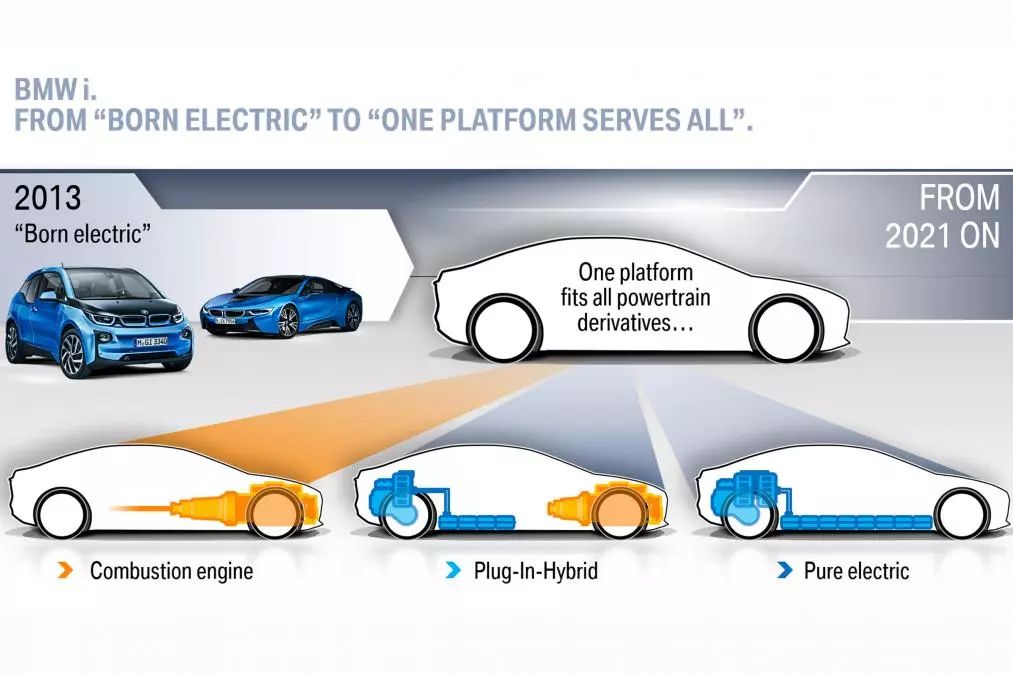
MINI, on the other hand, will be different. As stated by BMW Board member Shenhua Xiao, MINI will become a fully electric brand in the future. In comparison, Daimler also plans to transform Smart into an electric brand.You can also see from these materials that in BMW’s new energy strategy, the proportion of plug-in hybrid is not inferior to that of pure electric vehicles.
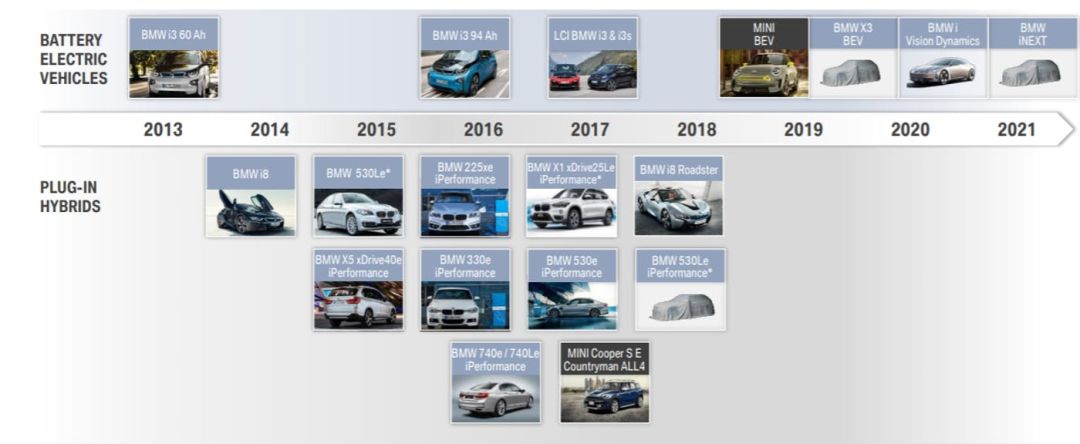
In a document from 2012, BMW envisioned a longer-term future for the use of hydrogen fuel cells.
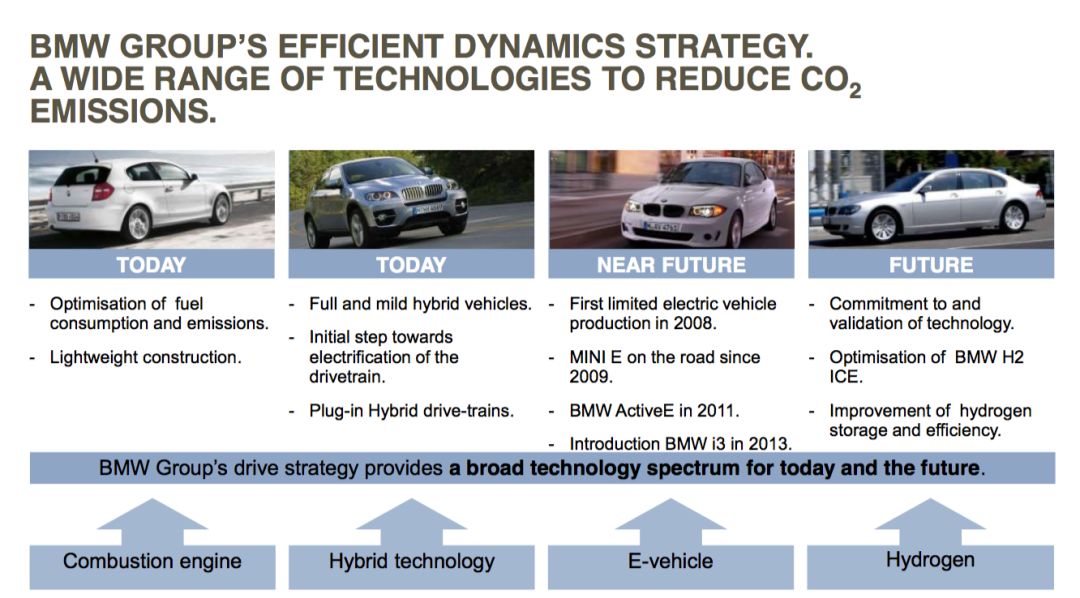
It seems that BMW is entering the development of electric vehicles with a more cautious attitude. BMW’s publicized data states that by 2025, new energy vehicles will account for 15%-25% of sales.
Therefore, in recent years, BMW has increased its investment in the new energy supply chain. Two weeks ago, BMW also publicly announced that it would sign contracts to guarantee the supply of cobalt and lithium resources for the next ten years.
Compared with its traditional rival Mercedes-Benz, BMW seems to prefer to create challenges for itself. Traditional automakers have never had the ambition to compete for the first place in cruising range. For BMW, the key issue is how to maintain BMW’s driving pleasure while meeting the requirements of three different driving energy types.

- Entrance with Built-in Battery, Luxury Players Mercedes-Benz and BMW, Volkswagen’s Different Gameplay* BMW: 9 Cars in 45 Years of Electric Vehicle History

This article is a translation by ChatGPT of a Chinese report from 42HOW. If you have any questions about it, please email bd@42how.com.
